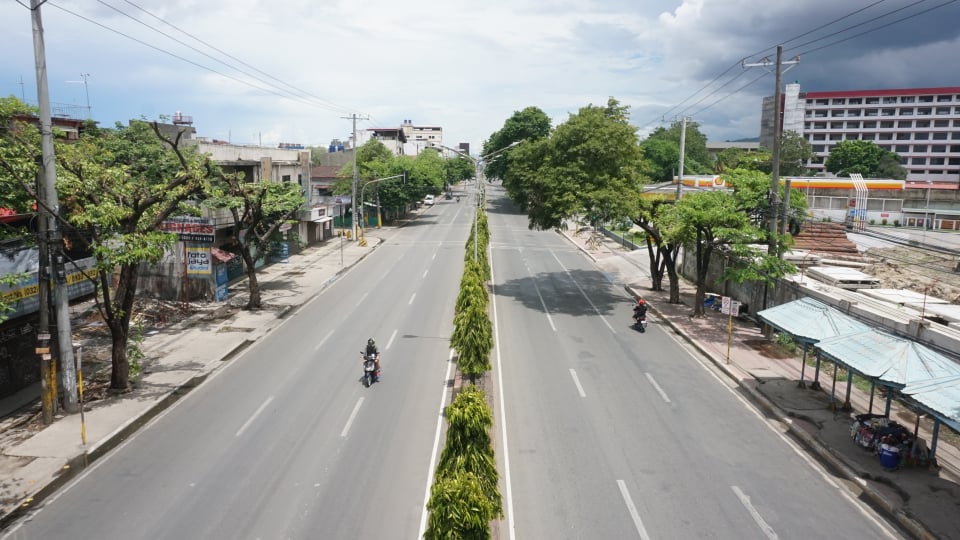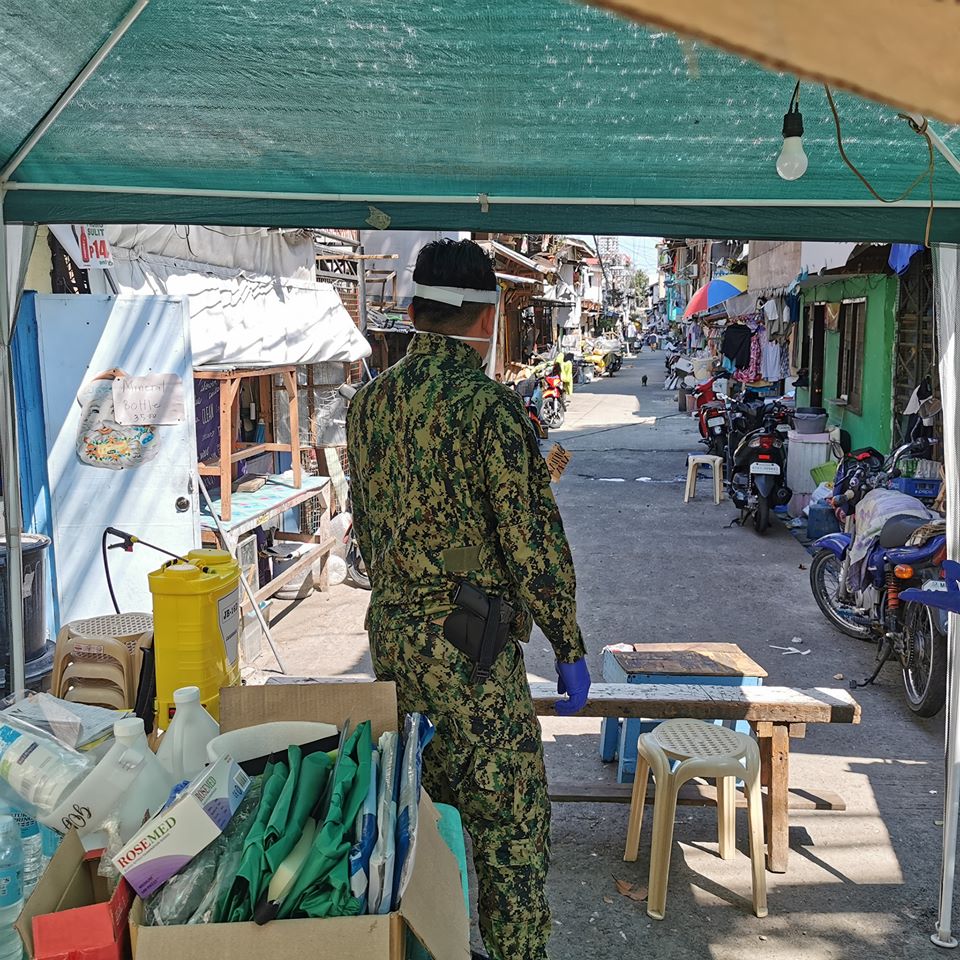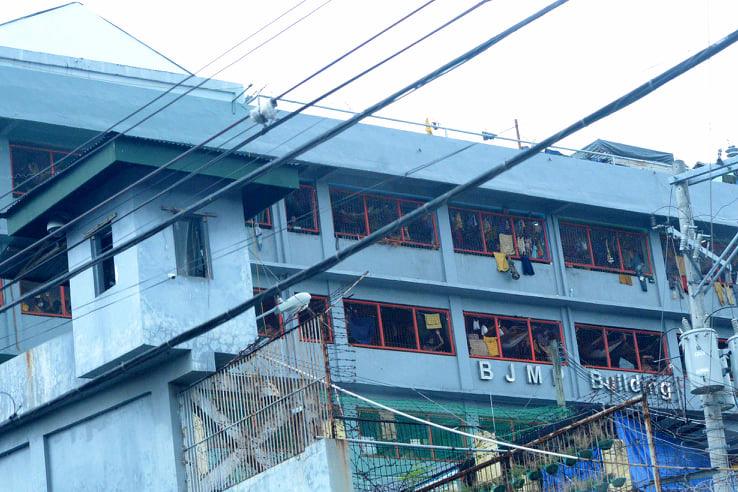COVID-19 timeline in Cebu City

N. Bacalso Avenue, one of the longest streets in the city, is almost empty in this photo taken on Sunday, May 31, 2020, a day before Cebu City was downgraded to GCQ from ECQ. | CDN Digital file photo
First of two parts
CEBU CITY, Philippines – Cebu City ended the last week of 2020 with a development better than what it went through during the first half of this year–there are less than 200 active cases left of coronavirus disease 2019 (COVID-19).
Active cases refer to patients still infected with SARS-CoV-2, the virus that causes COVID-19, which was declared a pandemic by the World Health Organization (WHO) last March.
With a population of around 1.1 million, based on local officials’ count, Cebu City is the heart of the country’s second-largest metropolis, Metro Cebu.
The capital of Cebu province, the ‘Queen City of the South,’ is considered as the center of commercial and economic activities in the Visayas-Mindanao region.
But like any major city, it was not spared by the COVID-19 outbreak.
Before it achieved in flattening the epidemic curve, Cebu City was tagged as the epicenter of the virus in Central Visayas – and some experts say, maybe even for the entire Philippines.
Data from the Department of Health in Central Visayas (DOH-7) showed that as of December 30, the city is monitoring 106 active cases of the infection.
Meanwhile, Cebu City has documented a total of 10,820 confirmed cases of COVID-19 in which 10,022 have already recovered, enabling the local government to post a recovery rate of 92.7 percent.
The city has a COVID-19 mortality rate of 6.38 percent as it recorded a total of 690 deaths related to the infection.
As we move on to 2021 with renewed hopes, CDN Digital has come up with this year-ender report, documenting the most significant events and milestones the Queen City of the South has experienced during the pandemic.
JANUARY: First suspected COVID case in PH was found in Cebu City
News of SARS-CoV-2, named back then as the novel coronavirus 2019, began in December 2019 after it was discovered in the Chinese city of Wuhan in Hubei province. The story would later explode in the following year, January, sending teeters across the globe.
Cebuanos were also keeping watch on its developments.
Social media here went abuzz when reports started circulating online that a mother and her five-year-old son, both from Wuhan City, allegedly showed symptoms of the then mysterious disease characterized by dry cough and fever, during their stay in Cebu City for their English classes.
Health officials from DOH intervened and on January 21, announced that the samples taken both from mother and child yielded a ‘non-specific pancoronavirus.’ At that time, there were no laboratories in the Philippines capable of recognizing the kind of virus found in Wuhan City.
It took nearly three days, which involved delivering the specimens to Australia and back, for officials to declare that the mother and child, who were also subjected to quarantine upon discovery of their symptoms, did not get the ‘mysterious disease’ plaguing Wuhan City.
MARCH: Hello COVID, Hello ECQ
The first confirmed COVID-19 case in the entire island of Cebu was a 65-year-old physician who was hospitalized in Mandaue City. His case was logged and reported on DOH’s official website that monitors the infectious outbreak on March 18.
But it was only on March 28, or 10 days later, when health officials announced that they discovered the presence of SARS-CoV-2 in Cebu City from 18 patients, most of whom, at that time, were hospitalized and were senior citizens.
On the same day, the city government, led by Mayor Edgardo Labella, decided to follow the steps of Metro Manila – which is to implement Enhanced Community Quarantine (ECQ), the strictest form of community quarantine or lockdown.
As ECQ took effect on March 28, the streets of Cebu City gradually transitioned from being heavily congested to virtually empty as quarantine restrictions paralyzed public transportation, prohibited residents to go out of their houses except for essential trips, and strict border controls.
It was also at this time when the city introduced quarantine passes (QPass).
A car-less Escario Street, and traffic-free Osmeña Boulevard, both of which are unusual for a city riddled with traffic congestion, marked the first few weeks of Cebu City’s ECQ.
ECQ also forced several businesses here to suspend operations and worse – close permanently. This development would eventually turn out to have an adverse effect on the city’s economic health, prompting business leaders here to express opposition to the revival of city-wide and stricter lockdowns.
The city government also replicated ‘massive testing’, being conducted by several developed countries overseas such as South Korea, to determine the extent of the outbreak by purchasing at least 20,000 test kits that employ RT-PCR (real-time polymerase chain reaction) techniques, the gold standard in detecting SARS-CoV-2.
Officials also claimed to be the first local government unit (LGU) in the country to do ‘massive testing’ which was rolled out in April, when hundreds of infected patients began to appear.
APRIL: Hotspots Zapatera, Cebu City Jail
The spike in the number of COVID-19 cases in Cebu City began between April 14 and April 15 when the City Health Department finally did ‘mass testing’, taking swab samples from first-degree contacts of confirmed patients. As a result, double-digit reporting in the additional patients per day began.

A densely populated sitio in Barrio Luz is placed under lockdown starting Easter Sunday, April 12, 2020 after three COVID-19 cases were reported there. | Photo courtesy of Councilor Dave Tumulak
At the center of the mass testing was Sitio (sub-village in English) Zapatera in Barangay Luz, a densely populated urban-poor area in uptown Cebu City. Barangay officials were the first to sound the alarm after discovering that one of their residents in Sitio Zapatera tested positive for the virus.
They were the ones who told health experts from CHD about the circumstances surrounding their first patient, particularly the fact that he resides in a community where houses are built so close to each other, and that there was barely enough space for roads leading to the interior parts.
On April 7, total lockdown was implemented in Sitio Zapatera but news of it only surfaced on April 12 when two more residents there were confirmed to have COVID-19.
At this point, village officials sought further assistance from the city government and the police in an attempt to contain the virus but later on, this would prove insufficient as the number of infected patients in Barangay Luz eventually jumped to more than 200.
Read: Luz officials to PRO-7: Lift lockdown in Sitio Zapatera
Before Sitio Zapatera was tagged as ‘COVID-19 hotspot’, experts from CHD have earlier expressed concerns about the challenges and difficulties in containing the virus in urban poor communities due to the fact physical distancing, one of the most important health protocol designed to prevent the spread of the infection, cannot be fully implemented there.
Aside from urban poor communities, concerned citizens and groups were also alarmed about the possibility of the virus spreading in jailhouses.
In a report from the Philippine Center for Investigative Journalism (PCIJ), the Bureau of Jail Management and Penology (BJMP) reported that most penal facilities across the country are around 500 percent overcrowded.
Running at a rate like this, most jails in the Philippines, including the Cebu City Jail in Barangay Kalunasan, one can expect detainees sleeping right next to each other or with another prisoner’s foot over their heads.
Cebu City Jail was designed to house only a maximum of 900 prisoners but as of 2020, the BJMP here said it is now home to more than 6,400 persons deprived of liberties (PDLs).
With this, Cebu City Jail is 1000 percent overcrowded.
Up to this date, details on how the virus reached the city jail remained unclear, if not vague. But over 300 inmates and jail officers there contracted the virus.
Read: COVID-19 reported in Cebu City Jail
When health officials reported documenting two confirmed COVID-19 patients from Cebu City Jail – a jail officer and a detainee who eventually died – in April, Labella ordered the indefinite suspension of transferring – or in legal terms, committing – arrested individuals to the city penal facility and let them stay in police detention centers in the meantime.

This file photo courtesy of the Cebu City PIO shows a portion of the Cebu City Jail.
These mandates were later on adopted by BJMP’s central office, ordering all jailhouses in the country not to accept new prisoners as of the moment.
Visiting privileges and dunol, a practice of delivering packages for prisoners, were also suspended.
Read: Visiting rights of some C. Visayas jails suspended
MAY: Mambaling as the new hotspot, and ‘strategic massive rapid testing’
By May, Cebu City was still under ECQ. On May 4, the city breached the 1,000-mark in the total number of documented COVID-19 patients, and new cases kept rising.
The effects of ECQ, particularly on the economy, has also started to manifest through double-digit unemployment rates, more establishments suspending operations or permanently closing, and more people requesting for and relying on government aid.
In Central Visayas, the Philippine Statistics Authority (PSA) recorded an unemployment rate of 16.7 percent in April. This would translate to 905,140 out of the 5.42 million individuals in the region, age 15 years old and above, who lost their jobs.
Members of the private sector decided to team up with national government agencies to boost testing and fast-track execution of measures needed to revive the ailing economy, with tourism being one of the hardest-hit sectors.
It was in May when the city governments of Mandaue, Lapu-Lapu, and Cebu participated in a ‘strategic’ mass rapid testing together called the ‘Project Balik Buhay’ program.
Read: Business groups support Project Balik Buhay
‘Project Balik Buhay’ program was formulated in the hopes that Metro Cebu’s three largest cities will relax their ECQ protocols, and transition to a general community quarantine (GCQ) by May 21.
But this initiative from members of the private sector, DOH-7, and Office of the Presidential Assistant for the Visayas (OPAV) was under wide scrutiny as it employed the use of antibody rapid test kits.
There were questions hounding the reliability of antibody rapid test kits in detecting COVID-19, with critics pointing out that these were designed to see if antibodies, which are produced when infection occurs, are present in a person, and not the virus causing it.
Around 23,000 individuals in Cebu City alone were subjected to the surveillance program.
While health officials were ironing out mechanisms in carrying out Project Balik Buhay, a new COVID-19 hotspot is emerging in the southern district of Cebu City, and would eventually surpass the numbers posted by Sitio Zapatera in Barangay Luz, and Cebu City Jail.
A rapid outbreak of the infection was recorded in Alaska Mambaling.
Read: Mambaling breaks 500-mark of COVID-19 cases
Like Sitio Zapatera, this residential area is considered an ‘urban poor community’ but the population residing in Alaska Mambaling is twice that of the 9,000 individuals living in Sitio Zapatera.
Majority of the close to 700 COVID-19 cases in Barangay Mambaling came from Alaska Mambaling. As a result, residents there endured lockdown for a total of four months.
JUNE: Short-lived GCQ, surge in new cases
Cebu City greeted the start of 2020’s second half with relatively good news – the city was placed back to a more relaxed form of community quarantine – GCQ.
But it would turn out to be short-lived as it would soon grapple with a surge of new cases that led to overwhelmed hospitals, spike in COVID-related deaths, and the appointment of Environment Secretary Roy Cimatu.
The national government’s anti-coronavirus task force, the Inter-Agency Task Force for the Management of Emerging Infectious Disease (IATF-MEID), reverted Cebu City on June 15 back to ECQ, the lone area that did so in the entire country.
Read: It’s back to ECQ for Cebu City
Many experts also expressed alarm at the dramatic rise of new COVID-19 cases as well as reports of hospitals full to the brim with COVID-19 patients.
At one point, Foreign Affairs Secretary Teodoro ‘Teddy’ Locsin Jr. had to issue an apology to the United Kingdom when a Briton here died without getting proper treatment from hospitals as they have been swarmed by COVID-19 patients.
By June 23, President Rodrigo Duterte appointed Cimatu as the chief implementer of the Visayas counterpart of IATF-MEID. His assignment was to bring the outbreak in Cebu City down to manageable levels.
Read: Duterte to send Cimatu to Cebu to monitor COVID-19 situation
Barely 24 hours since he was tasked to intervene on behalf of the national government, Cimatu told local officials here to scrap all quarantine passes (QPass) they issued last March.

Department of Environment and Natural Resources Secretary Roy Cimatu (right most) arrives in Cebu City to assess the COVID-19 situation in the city. | Photo courtesy of OPAV
A new set of QPasses was released later on.
Read: Guidelines for the new quarantine passes in Cebu City
To be continued
/bmjo
Disclaimer: The comments uploaded on this site do not necessarily represent or reflect the views of management and owner of Cebudailynews. We reserve the right to exclude comments that we deem to be inconsistent with our editorial standards.
